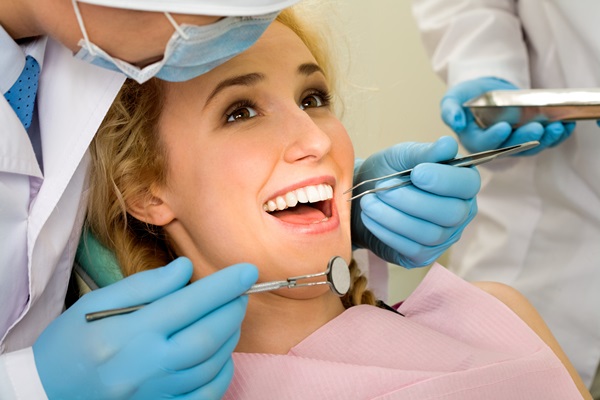How do I get a tax deduction for dental treatment?
Dental treatment and prosthetics are included in the list of medical services defined by Russian law for reimbursement to the taxpayer. Social benefits can be used by citizens in accordance with Art. 219 of the Tax Code of the Russian Federation. It remains only to familiarize yourself with the procedure for state-guaranteed compensation.
What is the tax deduction for dental treatment?
Russian legislation has determined two important points as part of the concept of tax deduction for dental procedures:
- Deduction from the income of the taxpayer, in the amount of expenses for prosthetics services for the reporting calendar period (year).
- Refund from income tax (13%, personal income tax) from the amount of the deduction agreed with the tax supervisory authority.
The deduction is made from any income of a citizen received by him for a calendar year (reporting tax period) and subject to calculation of income tax. Income taxed at a rate lower than 13% is not taken into account.
Pensioners can count on reimbursement in case of additional income, for example, receiving it from the sale of property or paying for a voluntary insurance policy.
The amount of tax payment for dental treatment in 2016
The tax legislation introduced a number of restrictions on tax refunds. Firstly, the amount of the social deduction cannot exceed 120 thousand. Secondly, the deduction for expensive medical treatment is limited to the amount of income received for the year and the amount of tax calculated from it for an individual. A few examples will help you understand the procedure for calculating the amount of tax refund.
Option 1. Suppose, conditionally, the income of an individual for 2016 was 110 thousand, and the cost of dental services was 55 thousand rubles. Personal income tax will be 13% and will be equal to 14,300 rubles. (110,000 x13/100). The amount of the social deduction to be returned in this option will be 7150 rubles. (55,000 x13/100).
A situation in which the costs are higher than the maximum threshold established by law will limit the payment to the person concerned to the amount of 15.6 thousand rubles.
Option 2. The taxpayer's expenses are equal to 155 thousand, income amounted to 110 thousand, withholding personal income tax -14.3 thousand rubles. (110,000x 13/100). The social return for medical services will amount to 14.3 thousand rubles.
Option 3. The cost of treatment is 155 thousand, and the income for the year is 130 thousand. The tax on the income of an individual will be 16.9 thousand rubles. (130,000x13/100).
The social deduction will amount to 15.6 thousand rubles, which will be equal to the maximum allowable amount of payments.
Option 4. Expenses for dental services of the taxpayer - 155 thousand, income - 200 thousand. Personal income tax will amount to 26 thousand rubles. (200,000.x13/100). The tax refund for treatment in this case will be 20,150 rubles. (155,000x13/100).
The procedure for receiving social benefits
The legislator determined the following types of services, the payment of which gives grounds for a tax refund:
- Treatment services (including diagnostics and initial examination).
- Assistance in a hospital setting (surgical intervention, installation of implants).
- Outpatient services (prosthetics, braces, etc.).
- Treatment in sanatorium-resort institutions.
- Purchasing prescription drugs.
- Acquisition of a policy for voluntary insurance.
 Receiving a refund by a taxpayer is allowed when he pays for dental services for children under the age of majority, spouse, parent (Article 219 of the Tax Code of the Russian Federation). There are two ways to get it.
Receiving a refund by a taxpayer is allowed when he pays for dental services for children under the age of majority, spouse, parent (Article 219 of the Tax Code of the Russian Federation). There are two ways to get it.
First way. An application for receipt is made simultaneously with the submission of a declaration for the reporting tax period (per year) in the form 3-NDFL. The period for consideration of the application and verification of the declaration for compliance with tax requirements is 90 days. With a positive decision, the payment is made within a month.
The second way. Documents for the deduction are submitted before the end of the reporting tax period, after payment for the treatment. After receiving the notification for the deduction, the taxpayer submits an application to the employer for the return of the social payment.
The payment is made by the employer simultaneously with the salary for the month in which the application for the deduction is submitted.
Documents for social payments for dental services must necessarily contain all the necessary information: the composition of the treatment, the cost of paid services, payment for the necessary medicines.
The package of documents includes:
- a certificate in the prescribed form of treatment from a dental clinic;
- financial documents confirming the fact of payment;
- the contract of the applicant with a medical institution for the provision of services,
- certificate from the employer on the applicant's income;
- license of the dental clinic for the right to provide services (copy);
- details of the taxpayer's bank for transferring the amount of the deduction.
If the payment was made in the interests of a relative, it is necessary to provide copies of documents confirming the degree of kinship.
Tax refund conditions for non-working pensioners
 A non-working pensioner is eligible for tax refunds for the treatment provided in 2016 if he had taxable income. It is necessary to provide documents for payment and apply to the tax authority with an application for receiving social benefits. In the absence of income, a relative can use the right to deduct if he is indicated in the contract with the medical institution and has paid in full for the treatment.
A non-working pensioner is eligible for tax refunds for the treatment provided in 2016 if he had taxable income. It is necessary to provide documents for payment and apply to the tax authority with an application for receiving social benefits. In the absence of income, a relative can use the right to deduct if he is indicated in the contract with the medical institution and has paid in full for the treatment.
Rules for filing a return for treatment
To get a positive decision on payment, you must be guided by a sample declaration in the form of 3-NDFL. Another important point is the correspondence of data on expenses and incomes to the tax period for which the application is submitted.
For example, at the end of the tax period in 2017, you can receive payments for 2014, 2015, 2016. Expenses must be made in the period corresponding to the declared one. For 2016, treatment costs are declared in the declaration for 2016.
